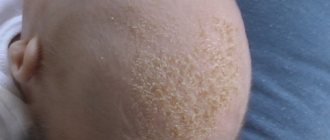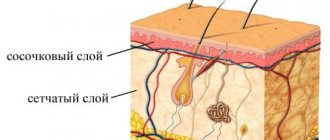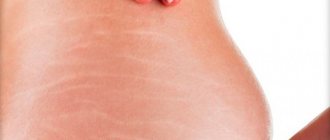Cracks in the feet rarely appear suddenly. As a rule, the appearance of such a crack is preceded by symptoms such as dryness and flaking of the skin. If the patient does not pay attention to these signs in a timely manner, the top layer of skin may rupture - a crack appears.
Depending on the depth of the cracks, podiatrists distinguish between superficial and deep cracks in the feet. Experts warn that if even superficial cracks appear, you must seek qualified medical help.
Many patients prefer to independently select remedies to solve the problem of cracked feet. However, such tactics will not bring the desired result - it is necessary, first of all, to identify the cause of the cracks and only then select the treatment methods necessary in each individual case.
What to do for cracks on the fingers and between the toes in adults and children: treatment
Of course, if the skin on your feet is dry, there are cracks that do not bleed, you may need to adjust your diet and make your shoes more comfortable. Below are recommendations that will help cope with shallow cracks at the initial stage of their occurrence:
- Use emollients. After each bath, it is necessary to apply a softening cream to the heels and skin of the toes, between them. You can highlight the cream Healer, Green Pharmacy. They contain cedar oil and other nourishing components that prevent the skin from drying out.
- Drink at least 2 liters of water per day. This applies not only to coffee, it is advisable to drink clean, mineral water without gas.
- Change your shoes. You should not allow your little toe to rub very hard against the shoe and fit tightly to it. Crossing your fingers is also not allowed, due to the narrow, uncomfortable toe.
- If you have general dry skin, take a course of treatment with vitamin A. It is sold in capsules at the pharmacy and is quite inexpensive.
- Control the humidity in the room. Buy a humidifier for your home and work. Make sure that the humidity does not fall below 60%. Often cracks in fingers occur due to dry air.
- Use special ointments and emollients to treat cracked feet.
- Use baths and decoctions to treat cracks.
- Use traditional medicine. These can be ointments and compresses, as well as various decoctions.
Softening your feet
Baths for additional effect
The main side method for treating cracks is herbal baths. You can add any herbal components to them that stimulate the restoration of the skin. The best recipe with common ingredients is a bath with medicinal chamomile tincture. It normalizes blood flow in the foot and helps heal even a deep crack.
You can replace chamomile with St. John's wort, celandine, pine needle oil, or even slightly concentrated urea.
To prepare, 150 grams of dry chamomile is poured with a liter of boiling water and infused for at least half an hour. Then the feet are immersed in a basin with this liquid and steamed for no more than 15 minutes. If you increase the procedure time, you can only further injure the dermis.
The same feature applies to wax masks, which are made after steaming your feet.
Sometimes, to enhance the effect, alcohol tincture is poured into the baths. But too much alcohol can lead to peeling, dryness and irritation of the skin near the crack. Only a moderate number of baths can contribute to a speedy recovery. It is important to combine them with traditional approaches to therapy.
The best ointments for cracks in the fingers and between the toes: list, method of application
A number of ointments can be used to treat cracked toes and between them. Their main advantage is that they apply well and act directly at the site of the lesion. Not absorbed into the gastrointestinal tract.
Review of ointments:
Zinc. A universal remedy that is often used for suppuration and bacterial infections. The main difference is that it disinfects the surface well, kills bacteria, fungi, and viruses, and promotes rapid healing.
Zinc ointment
Salicylic ointment. Contains salicylic acid. Often used for eczema and psoriasis, as well as a variety of bacterial skin lesions. Can be used when cracks appear on the toes, as well as between them. Effective against cracked heels.
Salicylic ointment
Balm Healer. It has a creamy consistency and contains a large amount of essential oils, as well as herbal decoctions. Softens the skin, makes it softer, and also helps exfoliate rough particles.
Balm Healer for feet
Balsam. A product that contains lactic acid. It helps exfoliate rough skin. In addition, the product contains essential, healing oils that soften the epidermis and fight cracks and corns. It is not recommended to use if the wound is bleeding.
Balsamed
Radevit. The ointment consists of a large number of vitamins, so it is advisable to use it specifically when there is a deficiency of nutrients in the body. Promotes rapid healing of cracks, as well as normalization of water-lipid metabolism in the epidermis.
Radevit
Gewol. An interesting and unusual remedy. It differs in that it does not work to eliminate any specific cause, but helps to normalize water-lipid metabolism in the skin. Therefore, it prevents further evaporation of moisture from the leather and its cracking.
Gewol
Signs of a broken toe
Depending on the location and severity of the fracture, symptoms can vary greatly. When a phalanx is cracked, pain is practically not felt, and the victim may not even be aware of the problem; very often the bone heals without plaster or fixation. When the first phalanx of a finger is fractured, severe, aching pain is felt.
When a toe is broken, the general symptoms are as follows:
- a hematoma forms at the fracture site;
- possible hemorrhage;
- the skin becomes dark blue, the skin around the damaged bone swells;
- severe and sharp pain with any attempt to touch or move a finger;
- unnatural mobility of the injured finger;
- inability to lean on the affected leg;
- immobility or partially limited movement of the finger;
- increased temperature and redness at the site;
- with a comminuted fracture, shortening of the finger is possible;
- with an open fracture, a wound with bone fragments;
- pronounced twitching or pulsating of the finger.
Upon physical examination, crunching of bone fragments is observed if little time has passed since the injury. The crunch is the result of the friction of broken bones against each other. Finger fractures are combined with damage to the ligamentous apparatus, sprains and dislocations of the phalangeal joints.
Folk remedies for the treatment of cracks in the fingers and between the toes: recipes
In addition to pharmaceutical products, traditional methods can also be used to treat cracked toes. The most effective are ointments that are made from beeswax, herbal extracts, and eggs.
Recipes:
- Egg ointment. To prepare it, you need to separate the white from the yolk. The yolk, in turn, is mixed with 5 ml of apple cider vinegar and 20 ml of sunflower oil. Next, you need to thoroughly beat it all until smooth. The paste should be applied to the affected areas, plastic bags should be put on the feet, and woolen socks on top of them. You need to go to bed with such compresses. Early in the morning, the feet are steamed, cracks and dead skin are removed using pumice. After this, moisturizer is applied.
- Bee ointment. It is created on the basis of propolis and beeswax. To prepare it, you need to finely chop a large onion and fry it in vegetable oil. Next, the mixture is filtered. It is necessary that the amount of sunflower oil in which the onions are fried is 120 ml. This liquid is mixed with 50 ml of beeswax, one pea of propolis is introduced. The mixture is placed in a water bath and stirred until the components are completely dissolved. Pour the paste into a dark container and store in the refrigerator. Apply at night.
- Plantain ointment. You need to grind one teaspoon of dry plantain herb into powder and add a couple of drops of oil. Next, add Vaseline to the mixture. You need 1 part plantain with oil and 10 parts Vaseline. When the paste becomes homogeneous, apply it to the damaged areas. Apply the ointment twice a day, morning and evening. It is advisable to steam the skin and wipe dry before applying.
- Onion oil. You need to chop 2 large onions and fry them in vegetable oil. Strain the mixture and add a few drops of sea buckthorn essential oil. Rub this substance into the cracks twice a day. You can make night healing compresses. To do this, cotton wool is soaked in oil and applied to the affected areas. Next, put on linen socks and sleep with these compresses.
Folk remedies
First aid for a broken finger
If you have symptoms indicating a possible fracture, there is no need to panic in the first place. The first thing you should do is call an emergency ambulance. Before the doctor arrives, all efforts of the victim should be aimed at stopping the bleeding (in the case of an open fracture), fixing the limb and anesthetizing the injury site. To prevent negative consequences, the following rules must be followed:
- even in the absence of pronounced symptoms, one should not refuse to consult a doctor;
- fixation of the limb is one of the main stages of effective treatment;
- the broken finger should not touch foreign objects;
- non-displaced fractures may not be fixed until the ambulance arrives;
- pain can be relieved with nimesil, analgin and ibuprofen;
- A cold compress is another effective way to relieve pain.
It is important to note that when applying an ice pack, keep the compress for no more than 10 minutes to prevent possible frostbite. A repeat procedure is possible after a 3-4 minute break. Even if you suspect a fracture, experts recommend immediately contacting a specialized medical institution for qualified help.
How to treat cracks on fingers and between toes with aloe and sea buckthorn oil?
Sea buckthorn is an effective remedy for treating cracked toes. With its help, it is possible to soften cracks and promote their healing.
Recipes for using aloe and sea buckthorn:
- For treatment, before going to bed, soak your feet in warm water with a small amount of baking soda added. Wipe dry and apply sea buckthorn oil, put the bag on top, and then wool socks. Wash your feet in the morning.
- Another great remedy for treating cracked heels is aloe. To use it, you need to keep the leaves in the refrigerator for several hours. After this, the sheet is cut lengthwise and applied to the damaged areas. It is advisable to steam your feet in warm water with a small amount of soap before doing this. Aloe applications are left for about 2-3 hours, or overnight.
- To achieve really good results, you need to use sea buckthorn oil and aloe every other time. That is, one night you make a compress from aloe, the second you make compresses from sea buckthorn. The course of treatment is 10 days.
Aloe for cracks
How to diagnose a broken finger
- Upon palpation, the pain sharply intensifies and does not go away for a long time (an hour or two).
- When a fracture occurs, a sharp pain is felt, which can radiate to the nearest parts of the foot. Deformation of the phalanx, unnatural position of the finger. Swelling and strong (acute) pulsation at the fracture site.
- If there is a fracture, the victim cannot move the injured finger. Any attempt to stand on the affected leg causes the patient to experience severe pain. To relieve pain symptoms, the affected finger is fixed in one position.
- Hemorrhages form under the nail, hematoma and swelling appear, and the skin becomes bluish.
How long does it take to treat cracks in the thumbs, fingers and between the toes?
The effectiveness of the ointment depends on the severity of the disease and its cause. If the cracks are caused by improper heel care, then you can quickly deal with cracks, as well as peeling in the toes and between them. If the damage is caused by a fungus, then treatment with traditional methods may be ineffective.
Regarding medications, the treatment period is selected according to the instructions and is usually 7-14 days. Mycosis takes longer to treat. The treatment period can be more than 1 month. In order to increase the effectiveness of the ointment, antifungal drugs are recommended for oral administration. These are medications such as Ketoconazole, Nystatin, and Fluconazole. These drugs should not be taken without a doctor's prescription, because the symptoms of the disease may be similar, but their causes may differ. If you use traditional methods, ointments, and compresses to eliminate cracks, then on average the course of treatment is approximately 7-10 days.
Cracked toes
Conclusions about crack therapy
In conclusion, it is worth recalling that timely medical intervention and vigilance towards developing symptoms can eliminate side effects and complications. For example, without the timely use of pharmaceuticals, the risk of complications of the intertriginous or dyshidrotic form increases. And they are much more difficult to get rid of.
Combine treatment with baths and official medications - ointments, gels, sprays or even tablets for oral use. And don't forget about taking care of your skin. It must be washed regularly and treated with special heel creams like Gewohl.
It is important to prevent fungal diseases and wear comfortable shoes. This will reduce the risk of crack recurrence. And during treatment of existing ones, be sure to listen to the dermatologist’s prescriptions. This is the only way to cure cracks in the little finger in a short time.
Are people allowed into the pool with cracks on their fingers and between their toes?
Of course, if there is no serious damage, then no one will prohibit you from going to the pool. You need to think about the fact that if cracks in your legs are caused by a fungus, then it will quickly spread to other people, so you should refrain from visiting the pool until you are completely cured.
Recommendations:
- Visiting the pool is contraindicated not only because you can infect other visitors. It's dangerous to yourself. The fact is that in conditions of high humidity, as well as with an increase in the chlorine content in the water, the fungus becomes more aggressive and affects other fingers. Therefore, if you have cracks in only one area, after visiting the pool, the infection may spread to other areas.
- If you are not sure of the cause of the cracks, but the possibility of fungal infection is ruled out, fungal spores can get into these cracks. They often live in showers and swimming pools. A swimming pool is an excellent environment for fungal spores to spread and multiply. Because in conditions of high humidity they live long enough and reproduce well.
- Many dermatologists recommend using your own personal slippers when visiting rooms that are rented by the hour or hotels or swimming pools. Never step on the tiled floor with bare feet. After using the slippers, wash them with soap and dry. Only then put it in a bag, and before putting on clean, dry socks, apply regular Miramistin . will do .
- For prevention, you can use ointments based on ketoconazole and fluconazole . They prevent the growth of fungus. This way you won't get infected. If you yourself are a carrier of the fungus, we recommend that you refrain from visiting the pool. Before you recover, you will allow the infection to spread to other areas of the body.
Visiting the pool
Cracked fingers seem not at all dangerous, but they are not. A serious fungal infection can negatively affect the immune system and also disrupt the functioning of the entire body. We recommend that if cracks appear on your fingers, be sure to consult a doctor and not self-medicate.
Why are they formed?
Many people believe that only older people have cracks in their feet. Indeed, 25–30% of people over 40 have them. But they also occur in men, women younger than this age, and even in children.
The causes of cracks in the feet are a violation of the hydrolipid balance of the skin, a decrease in the production of collagen and elastin, and a decrease in the protective fat layer. Externally, this manifests itself in dryness, thickening, loss of elasticity, and firmness. Every day, the feet experience enormous pressure to support the body in a standing position, controlling balance when walking or running. With such a load, the skin inevitably stretches and expands. If it is dry and loses elasticity, then the likelihood of rupture when stretched under body weight will increase.
In addition to natural age-related changes, cracks in the skin of the feet are provoked by the following internal and external factors:
- wearing tight shoes;
- fungal infections, dermatitis;
- foot deformities, flat feet, heel spurs;
- poor hygiene, insufficient hydration or nutrition;
- skin contact with dry, hot air, salty sea or chlorinated pool water, ultraviolet rays;
- poor nutrition, leading to a deficiency of vitamins A, E, group B, and microelements important for skin health;
- endocrine disorders, including thyroid disease, diabetes;
- metabolic disorders;
- excess weight, which exposes the skin of the plantar part of the foot to excessive pressure and stretching;
- problems with blood circulation in the lower extremities, causing a lack of tissue nutrition;
- walking barefoot on hard surfaces (sand, stones, asphalt).
Cracks on the feet are a consequence of dry and thickened skin, or otherwise keratosis. Keratosis develops when keratinized or dead cells of the upper layer of skin do not have time to exfoliate and become layered on top of each other. In severe cases, the layer of thickened skin is 1–2 cm.









